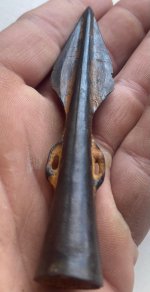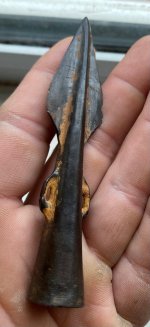Urien of Rheged
Full Member
Awaiting a meet up with my local find liason officer to take thismid Bronze age spearhead i found last week to be analysed and recorded by the portable antiquities scheme (UK) I'm dying to get the crud off it and with just ketchup and a cloth with tepid water ive managed to remove a fair bit but it's stubborn and im reluctant to go at it any harder with such a magnificent + 3000 year old relic like this.
Anyone know any good non abrasive methods to remove dirt like this from a Bronze alloy?
Anyone know any good non abrasive methods to remove dirt like this from a Bronze alloy?






